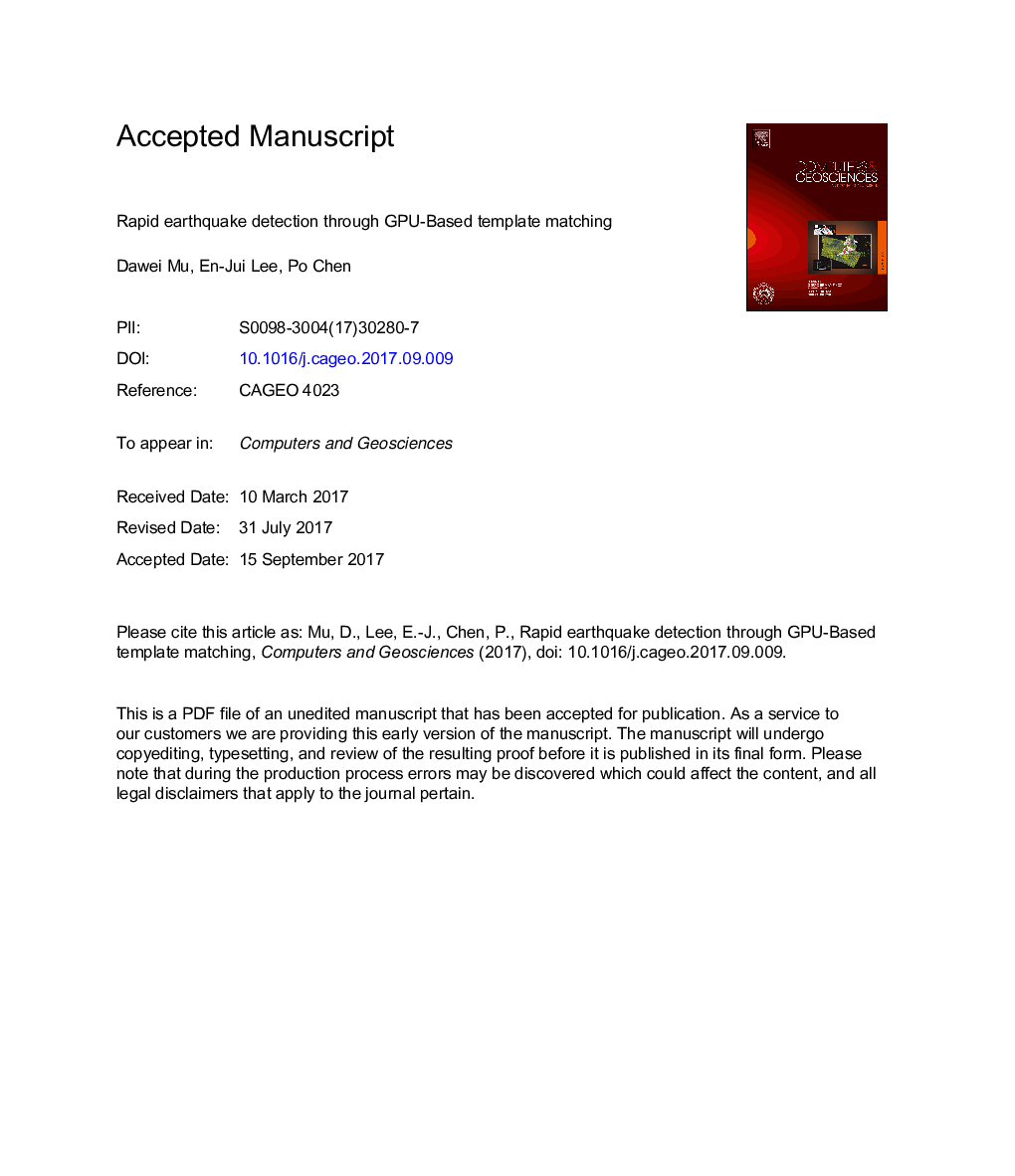| Article ID | Journal | Published Year | Pages | File Type |
|---|---|---|---|---|
| 4965367 | Computers & Geosciences | 2017 | 39 Pages |
Abstract
The template-matching algorithm (TMA) has been widely adopted for improving the reliability of earthquake detection. The TMA is based on calculating the normalized cross-correlation coefficient (NCC) between a collection of selected template waveforms and the continuous waveform recordings of seismic instruments. In realistic applications, the computational cost of the TMA is much higher than that of traditional techniques. In this study, we provide an analysis of the TMA and show how the GPU architecture provides an almost ideal environment for accelerating the TMA and NCC-based pattern recognition algorithms in general. So far, our best-performing GPU code has achieved a speedup factor of more than 800 with respect to a common sequential CPU code. We demonstrate the performance of our GPU code using seismic waveform recordings from the ML 6.6 Meinong earthquake sequence in Taiwan.
Keywords
Related Topics
Physical Sciences and Engineering
Computer Science
Computer Science Applications
Authors
Dawei Mu, En-Jui Lee, Po Chen,
